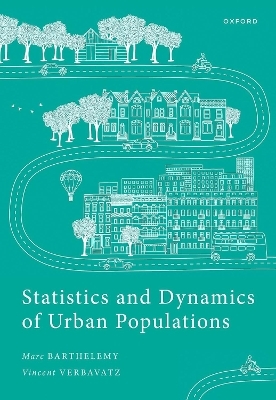
Statistics and Dynamics of Urban Populations
Oxford University Press (Verlag)
978-0-19-286754-4 (ISBN)
Urbanization is a fundamental process in human history and is increasingly affecting our environment and society. Although cities have existed for centuries, describing and controlling urbanization has always been difficult and still is: cities are continuously changing over time in a non-homogeneous fashion that has puzzled historians, geographers, philosophers, economists, urbanists, engineers, mathematicians and physicists. In particular, one of the most debated issues of urban studies has been the question of urban population growth. How do cities appear and disappear, grow or decline? Why do we observe a hierarchy of cities from small to large and not a typical city size ? These questions are not only relevant for census purposes. The population size of the city is an important determinant for most of urban issues: land management, congestion, public transport planning, economic growth, innovation incentives, food and good supply and climate-change adaptation. A sound understanding of population growth processes is an inescapable path for a good monitoring of city planning.
This book describes all aspects of quantitative approaches to urban population growth, ranging from measures and empirical results to the mathematical description of their evolution. It will be of interest to researchers working on quantitative aspect of cities and from many different disciplines such as quantitative geography, spatial economics, geomatics, urbanism and transportation, physics, or applied mathematics. This book will also be of interest to graduate students and researchers entering the field or interested in quantitative studies of urban systems.
Dr Marc Barthelemy is a former student of the École Normale Superieure of Paris and graduated at the University of Paris with a thesis in theoretical physics. His research focuses on complex systems with an emphasis on cities and networks. MB is research director at the Institute of Theoretical Physics (CEA) in Saclay and a member of the Center of Social Analysis and Mathematics (CAMS) at the Ecole des Hautes Etudes en Sciences Sociales (EHESS). Dr Vincent Verbavatz is a former student of the École polytechnique and graduated at the University of Paris-Saclay with a thesis in statistical physics. His research focuses the modelling of cities, notably of the modelling of urban growth. VV is an associate researcher at Institut des systèmes complexes de Paris Île-de-France.
PART I COUNTING PEOPLE
1: Urban population
1.1 Defining the city
1.2 An historical example: Paris
1.3 Functional and morphological denitions
1.4 Gridded population of the world
2: Why does population matter?
2.1 Population is a good start
2.2 Scaling in cities
PART II RANKING CITIES
3: The distribution of urban populations
3.1 Power-laws
3.2 Zipf's law for cities
3.3 How to t a power-law?
3.4 Revisiting Zipf's law for cities
4: Dynamics of ranking
4.1 Stable versus unstable ranking
4.2 Modelling the ranking dynamics
4.3: Rank variations of cities
PART III MODELS OF URBAN GROWTH
5: Stochastic calculus
5.1 Brownian motion
5.2 Itô and Stratonovich prescriptions
5.3 Fokker-Planck equation
6: Stochastic models of growth
6.1 Yule-Simon's model of growth
6.2 Gibrat's law for cities
6.3 Gabaix's mode
7: Models with migration
7.1 A modied Yule-Simon model
7.2 A master equation approach
7.3 Diusion with noise: the Bouchaud-Mezard model
PART IV HOW CITIES TRULY GROW
8: The generalized central limit theorem and Levy stable laws
8.1 The central limit theorem and its generalization
8.2 Levy stable laws
8.3 The generalized central limit theorem
9: From First principles to the growth equation
9.1 Building a bottom-up equation
9.2 Gravitational model
9.3 Minimal model for the inter-urban migration flows
10: About city dynamics
10.1 Solving a new kind of equation
10.2 Analysis and scaling of the solution
10.3 Rank dynamics
11: Outlook: Beyond Zipf's law
11.1 Zipf's law: the end?
11.2 And space?
References
Index
| Erscheinungsdatum | 29.12.2023 |
|---|---|
| Zusatzinfo | 56 line drawings and colour illustrations |
| Verlagsort | Oxford |
| Sprache | englisch |
| Maße | 178 x 253 mm |
| Gewicht | 502 g |
| Themenwelt | Naturwissenschaften ► Biologie ► Evolution |
| Naturwissenschaften ► Geowissenschaften ► Geografie / Kartografie | |
| Naturwissenschaften ► Physik / Astronomie ► Thermodynamik | |
| Sozialwissenschaften ► Soziologie ► Empirische Sozialforschung | |
| ISBN-10 | 0-19-286754-7 / 0192867547 |
| ISBN-13 | 978-0-19-286754-4 / 9780192867544 |
| Zustand | Neuware |
| Haben Sie eine Frage zum Produkt? |
aus dem Bereich


